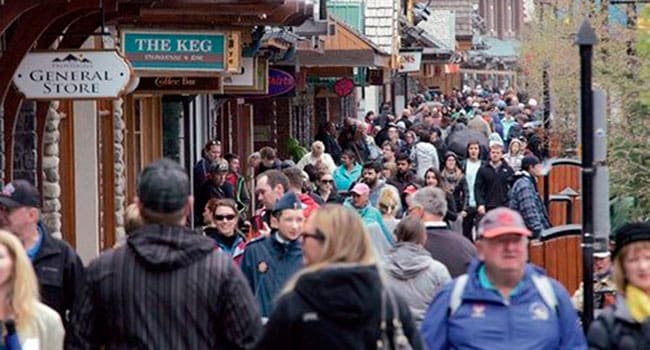 Canada’s national parks are having a big year. It’s both a blessing and a curse.
Canada’s national parks are having a big year. It’s both a blessing and a curse.
In July, the parks and historic sites saw nine per cent more visits than they did in 2016, which experienced 24.6 million visits for the year. And that was a big jump from the 23.2 million in 2015.
In one important way, increased park visits is good news: Getting out and experiencing the parks raises awareness among Canadians about the value of wild spaces. New Canadians, in particular, are taking advantage of this year’s free admission and are discovering our country’s breathtaking natural beauty. You could argue that experiencing the wild outdoors is part of becoming fully Canadian – although it’s more authentic in winter at minus 40.
Yet the steady and relentless increase in people coming to our national parks is also changing the very nature of the park experience. One need only wind through the crowds on the main commercial streets in the mountain park towns of Banff or Jasper or stand in line to view the falls at Johnston Canyon to realize the sleepy bucolic days of yore are gone, and likely forever.
On the August holiday weekend, Waterton Lakes National Park did something it had never done before: closed its gates to prevent more visitors from entering. In the view of park officials, the park had reached capacity. This phenomenon is likely to become more common.
A lot of environmental groups have expressed concern about the effect of Park Canada’s decision to offer free admission this year. The anticipated rush of people into our parks, they fear, will increase the risk of encounters with wildlife – creatures that are already challenged by encroaching humanity.
In its recent report on the state of Canada’s parks, the Canadian Parks and Wilderness Society (which, full disclosure, I volunteer for) urged Parks Canada to refocus on its priority mandate of nature conservation. It sounded the alarm over Parks’ increased focus on tourism and marketing, increasing visitation, and revenue generation. “This shift in priorities has resulted in developments being approved behind closed doors, with inadequate regard for how they impact on parks’ ecological integrity or for public input,” the report stated.
Yet, in spite of the hype over the free passes, I would argue this year is not the big worry. In fact, the number of visits are projected to fall somewhat short of Park Canada’s unofficial estimate of 27.3 million. The bigger worry is the long-term trend, as Canada’s population continues to grow.
One need only look to our southern neighbour to see what the future might look like. Famous parks, like Yellowstone and Grand Canyon, are virtual freeways of humanity during the peak summer months. Yellowstone saw 4.3 million visitors last year and Grand Canyon 5.9 million. Total U.S. national park attendance in 2016 was 325 million.
Just south of Waterton Lakes, the U.S. sister park, Glacier, is also experiencing a record year for attendance: one million visits in July alone, and two million so far this year – fully 17 per cent more than at the same point last year. And unlike Park Canada’s “free year”, the U.S. parks are only offering 10 days of free admission.
If the U.S. experience tells us anything about our own situation, it is that as population grows the craving to escape the urban concrete jungle will just keep getting stronger. We need to plan for this onrush of new visitors, not by barring the gates but by finding ways to manage the onrush. It may be time to consider banning vehicles in more popular park areas and providing shuttle services, for example. And, of course, the number of parks and protected spaces also needs to increase.
Those of us who have enjoyed the solitude of our parks for decades don’t love the idea of having to share them with more people. It’s pretty clear, however, that more people – a lot more – will be on those hiking trails, regardless whether they are promoted through marketing.
This is not just a challenge for Parks Canada. Catherine McKenna, the federal minister of Environment and Climate Change, also needs to devote some of her busy agenda to figuring out how to ensure the next generation of Canadians can enjoy our wild spaces as much as we have.
Veteran political commentator Doug Firby is president of Troy Media Digital Solutions and publisher of Troy Media.
The views, opinions and positions expressed by columnists and contributors are the author’s alone. They do not inherently or expressly reflect the views, opinions and/or positions of our publication.

